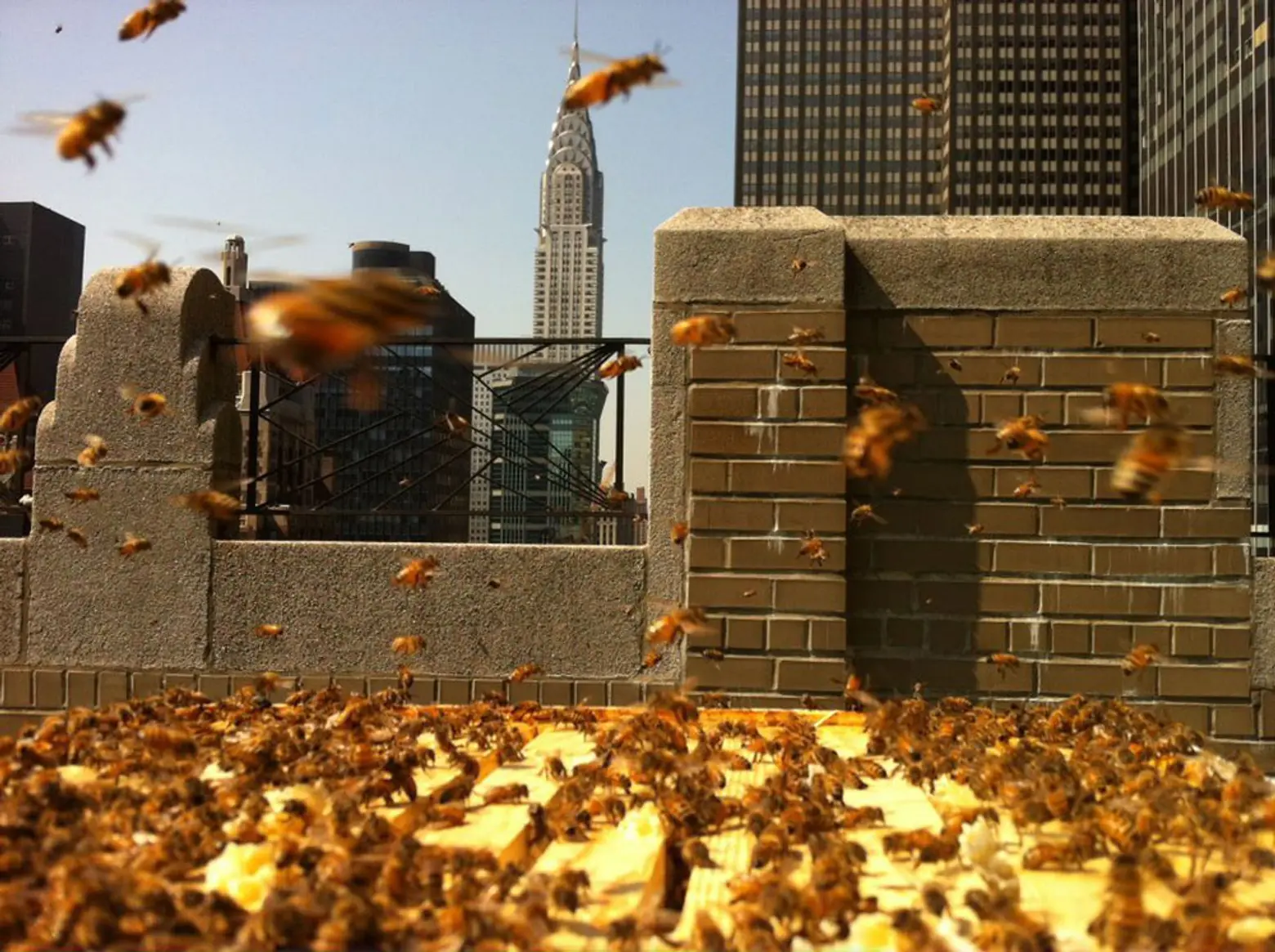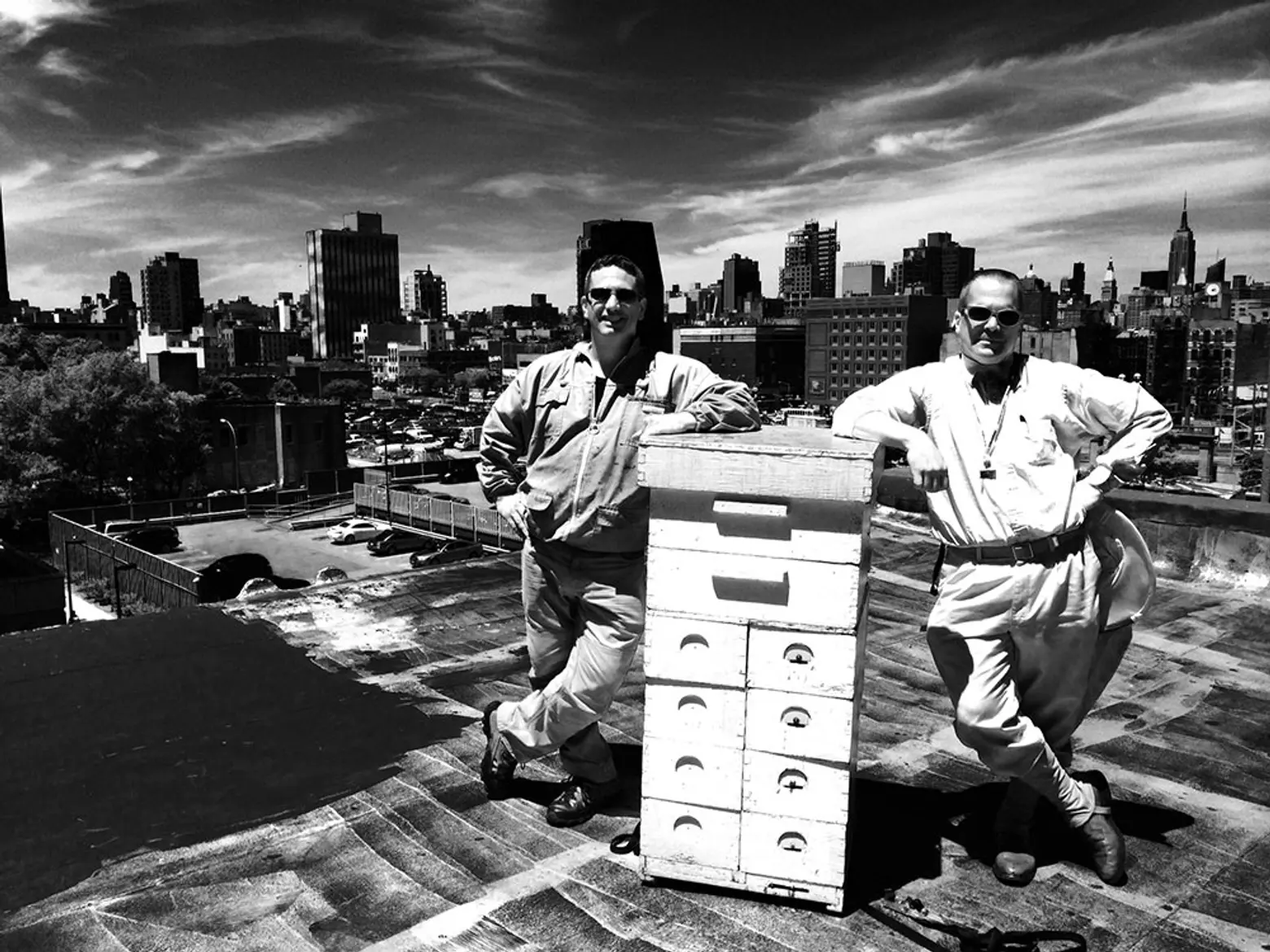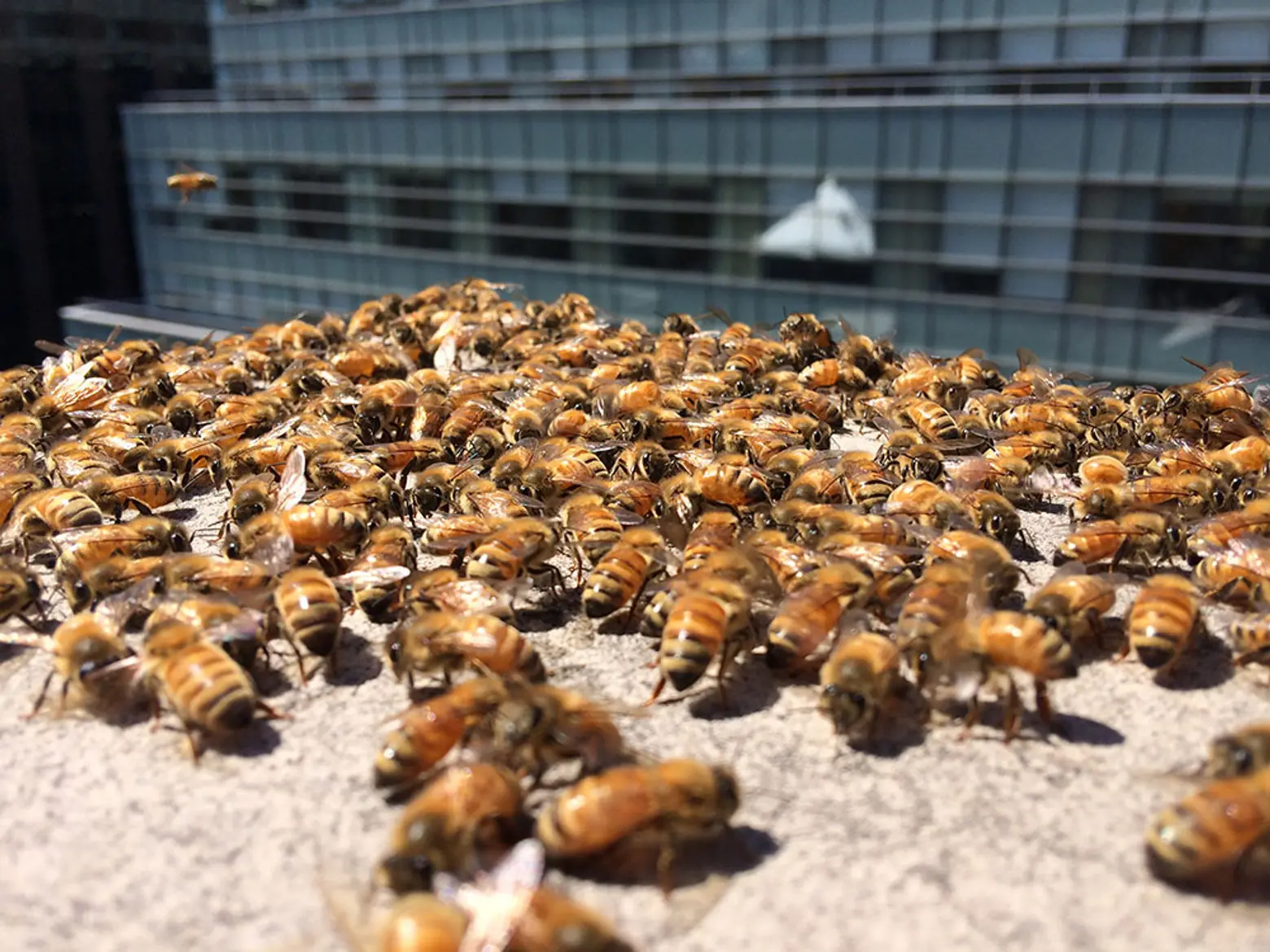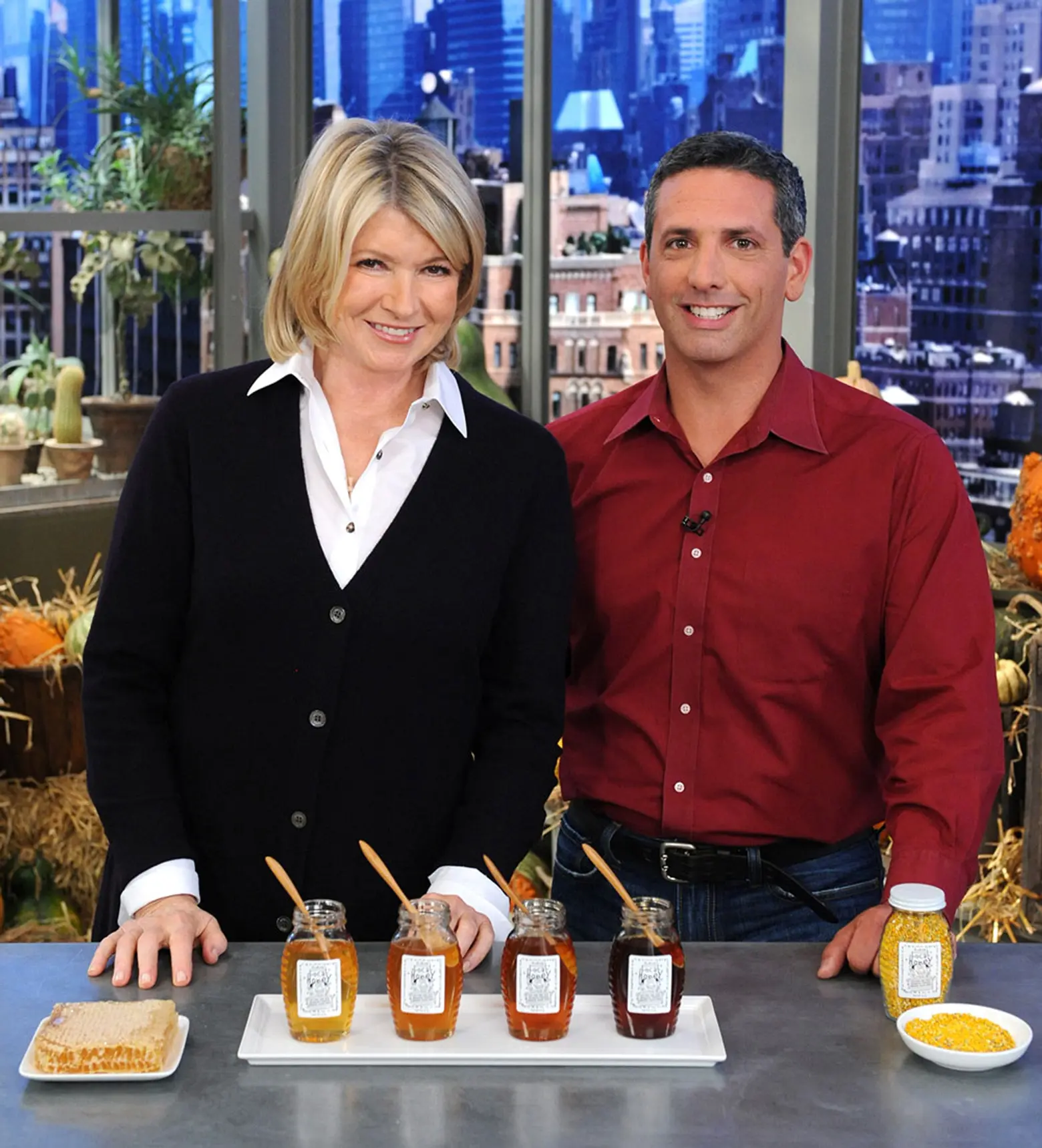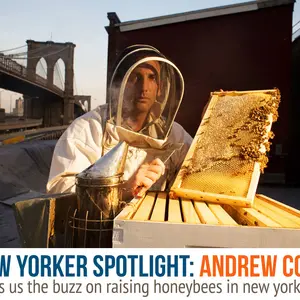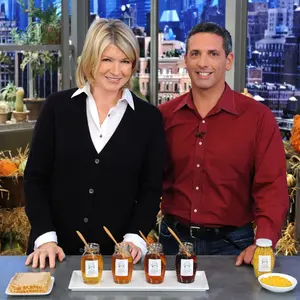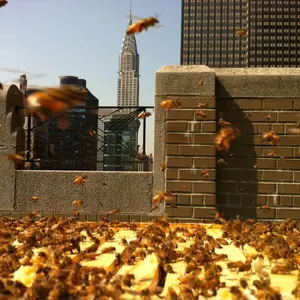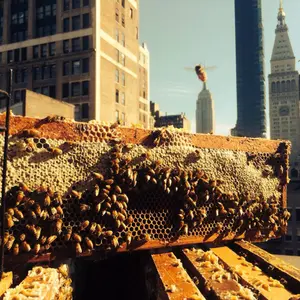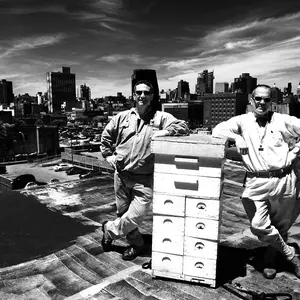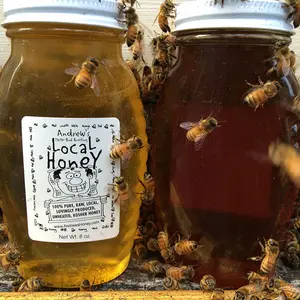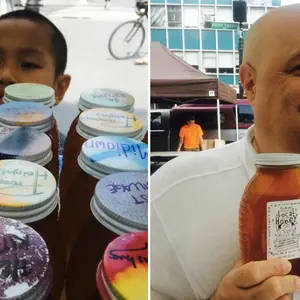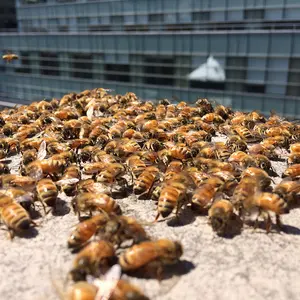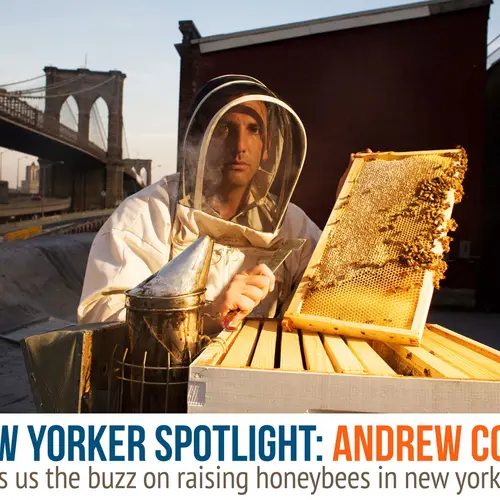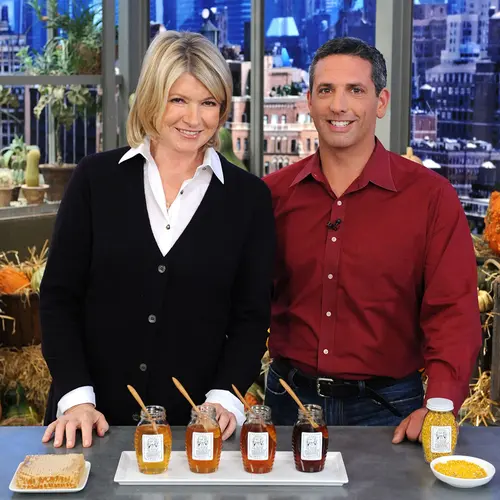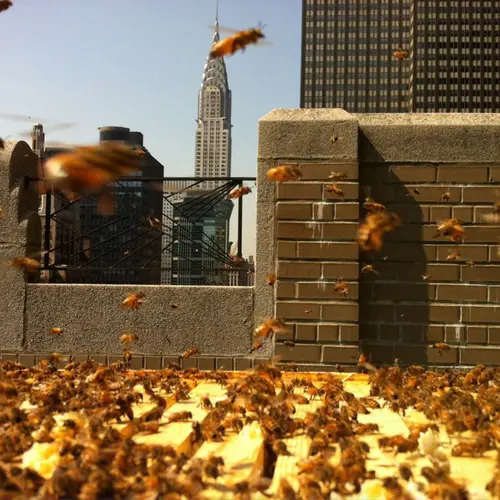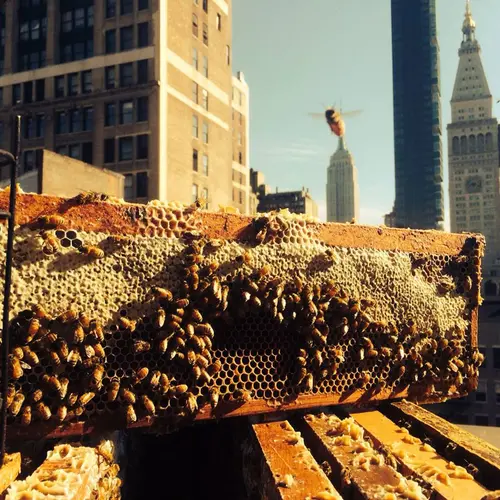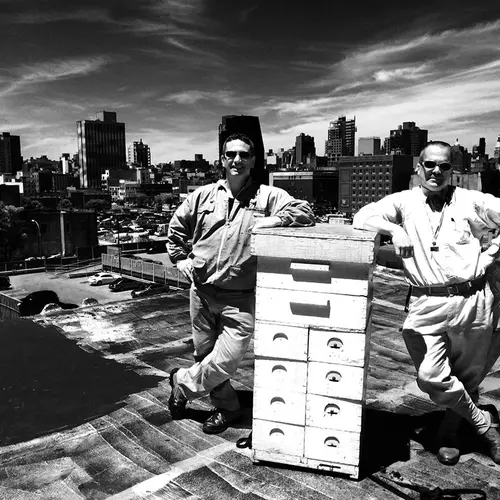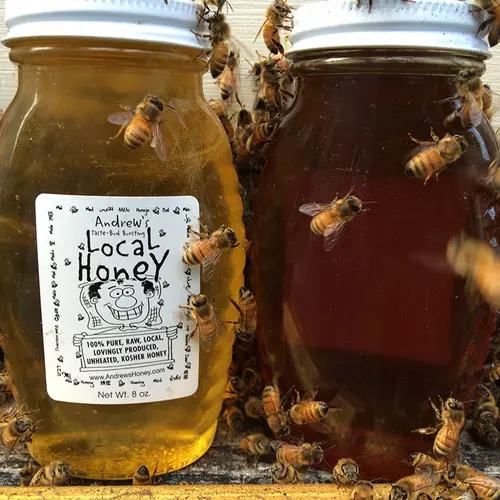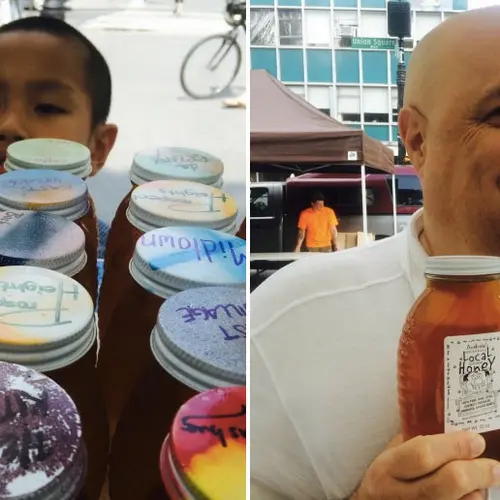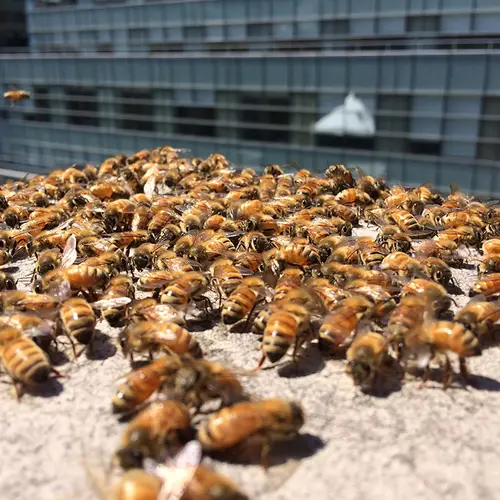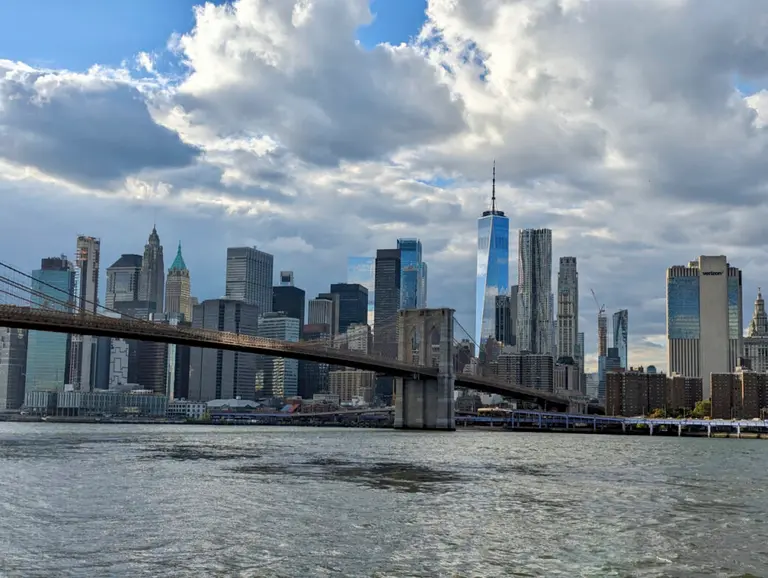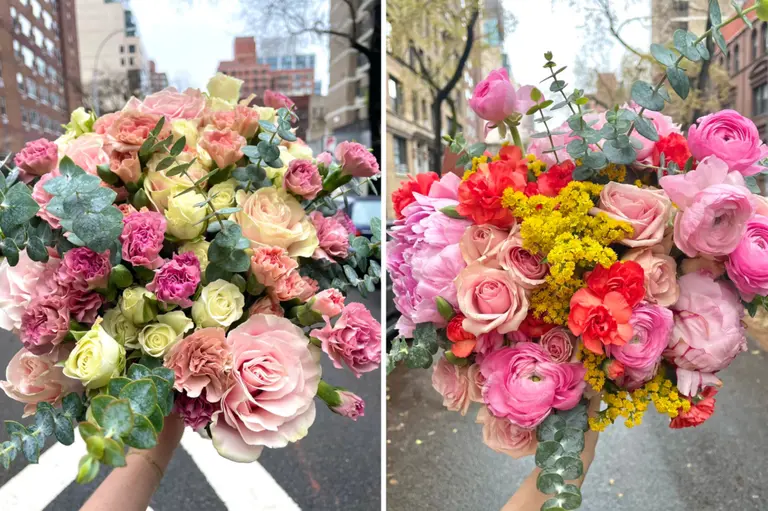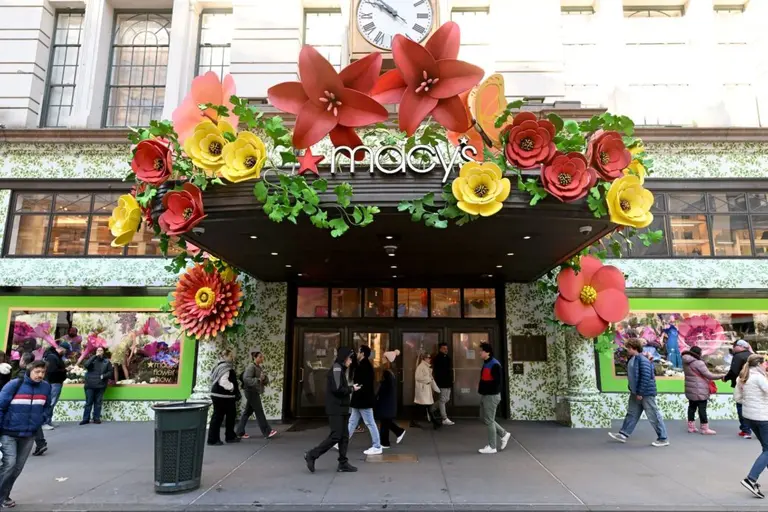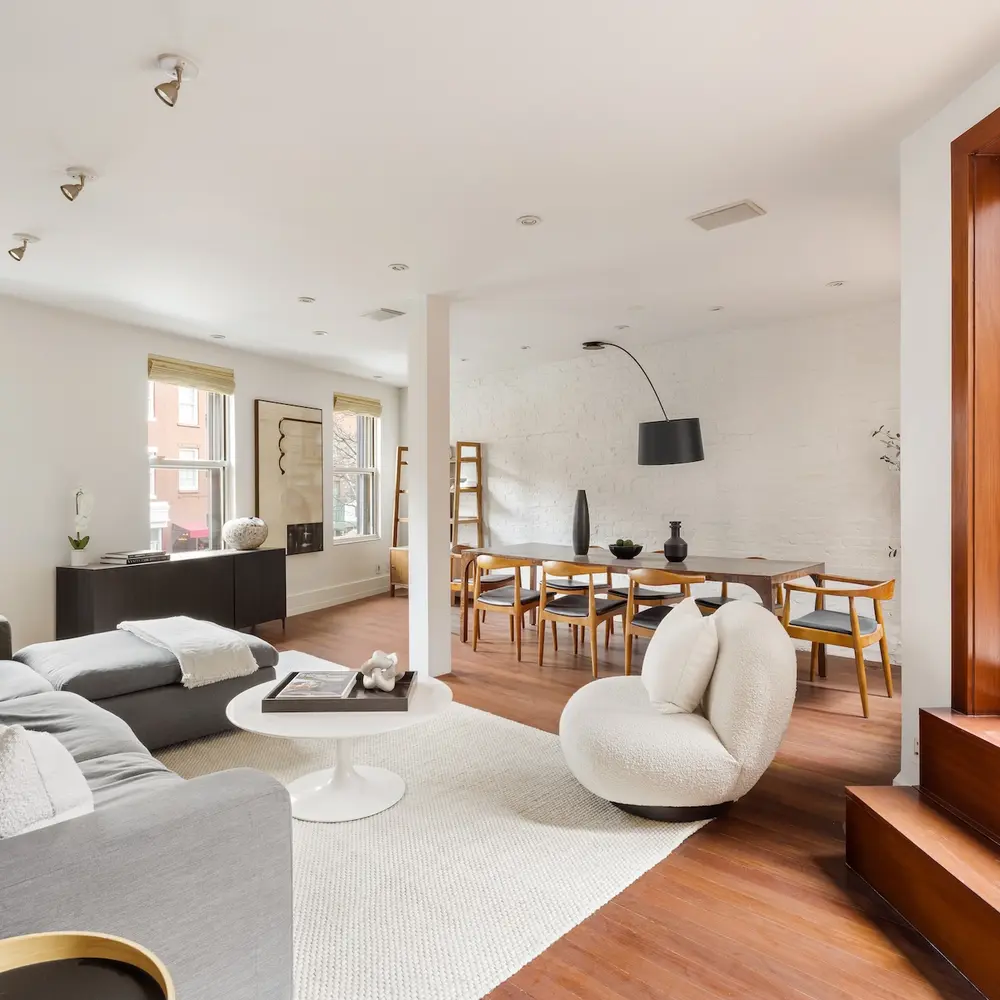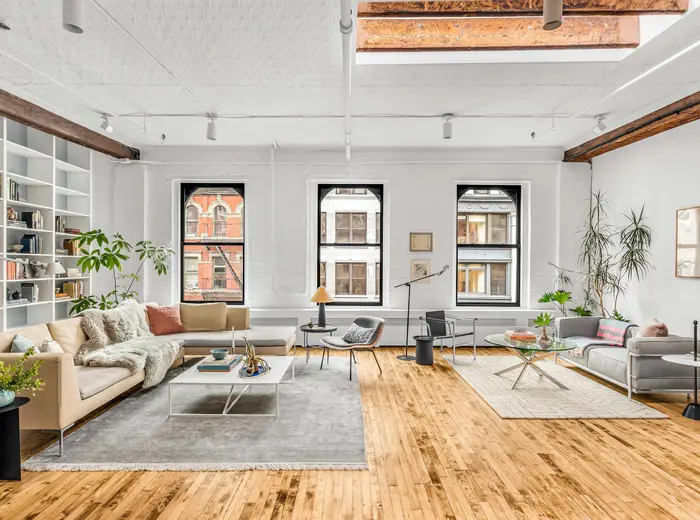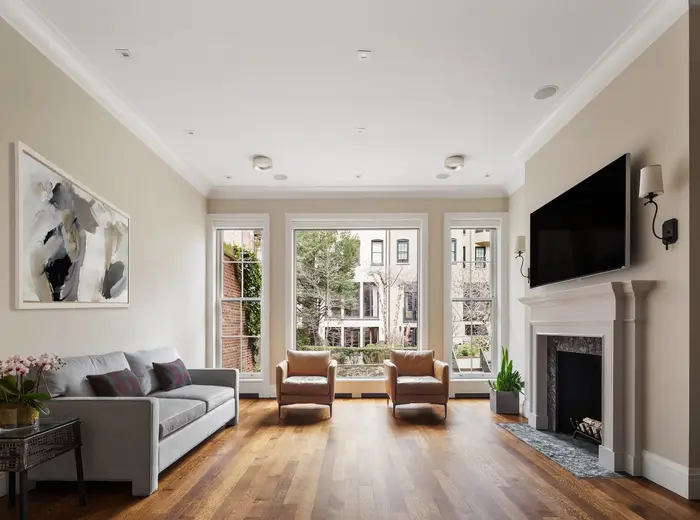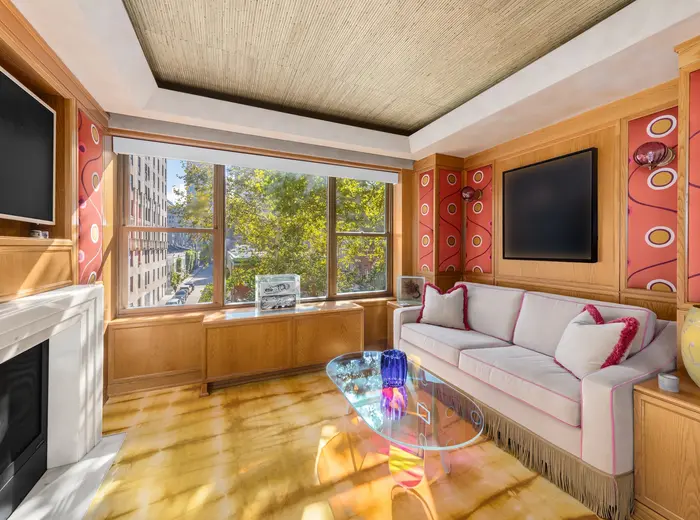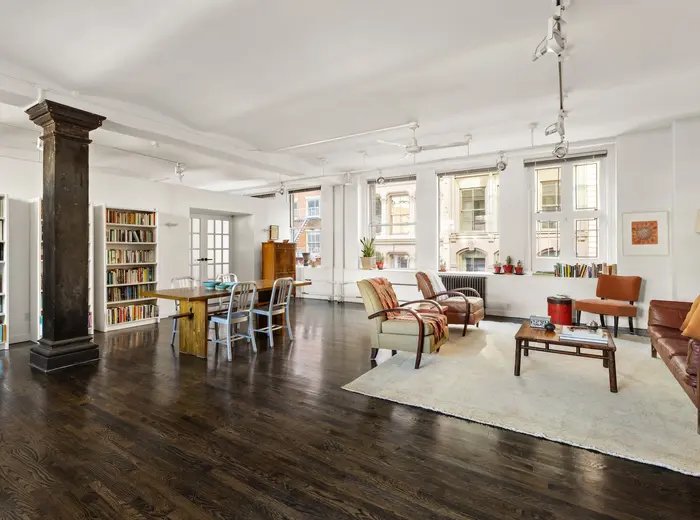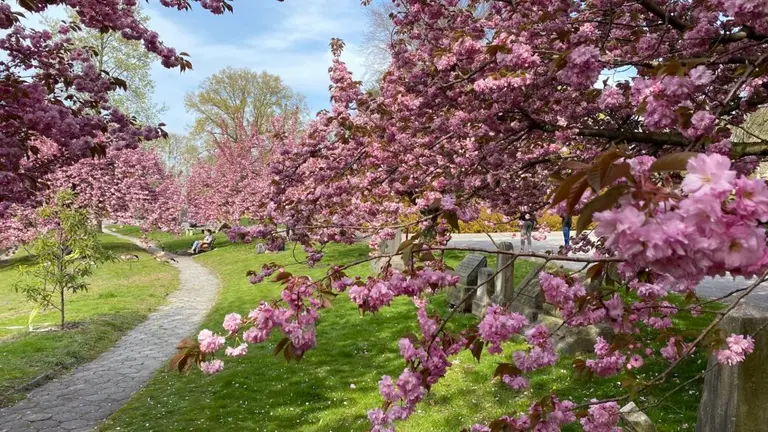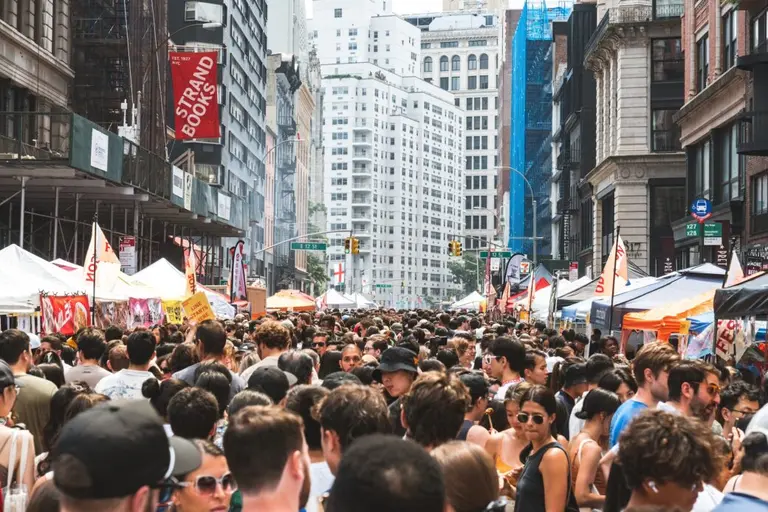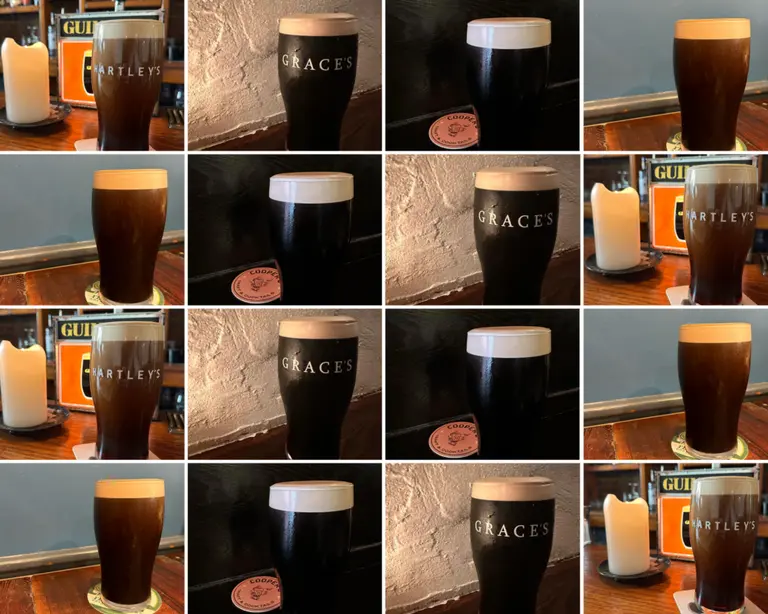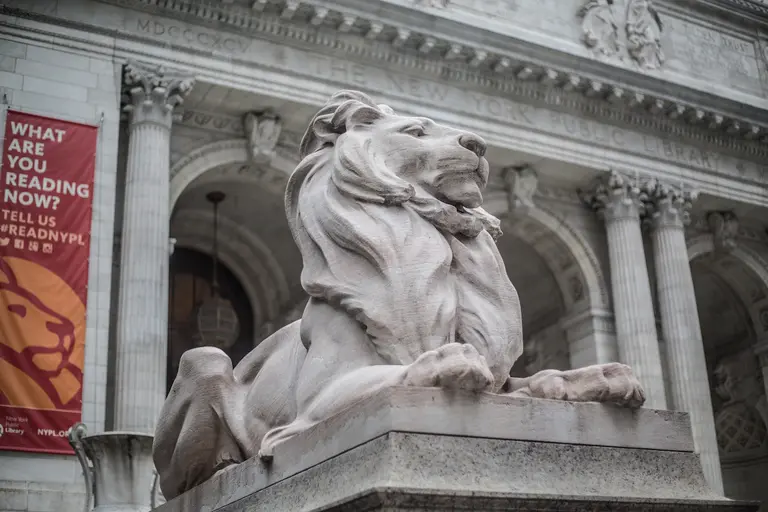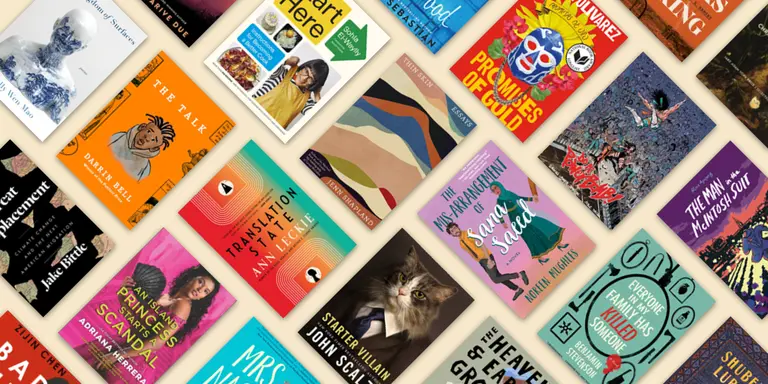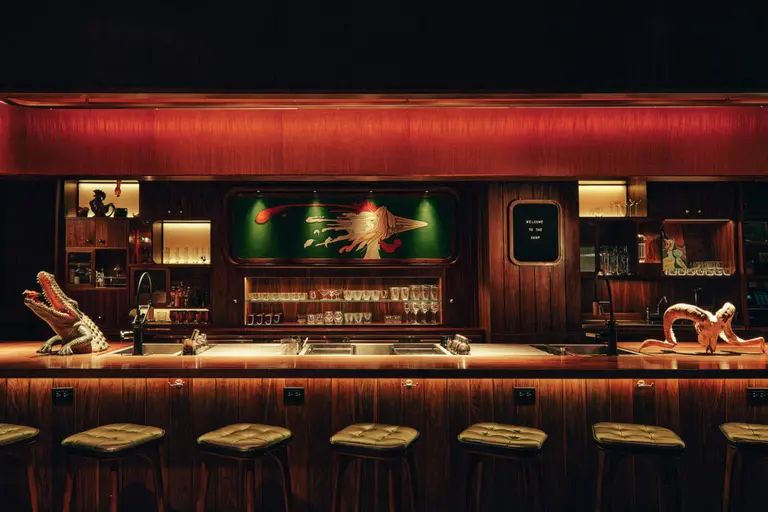Spotlight: Beekeeper Andrew Coté Gives Us the Buzz on Raising Honeybees in the City
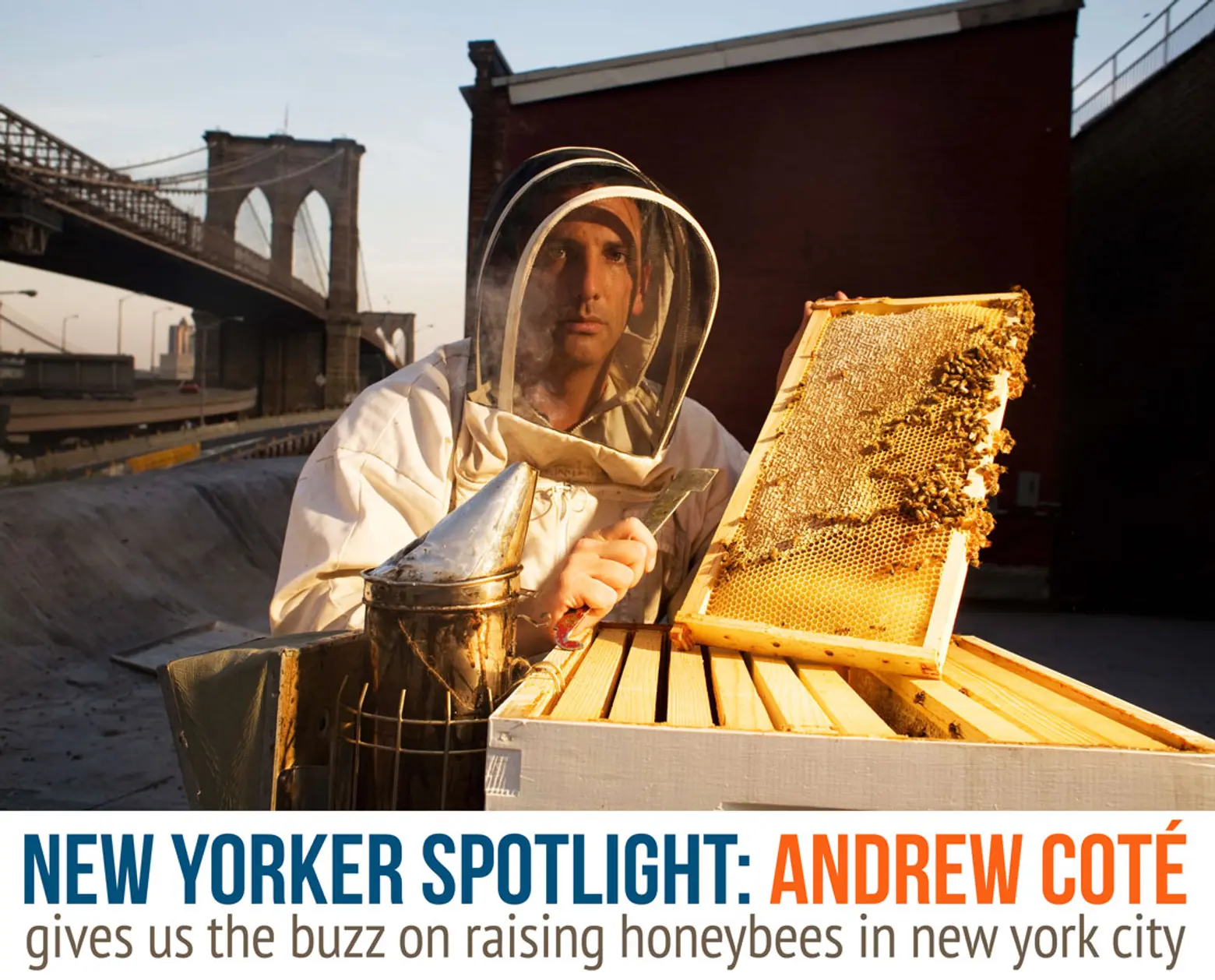
On rooftops throughout the city, there’s a great deal of activity taking place. This hustle and bustle isn’t coming from the construction of new skyscrapers, but instead from beehives across the city where honeybees are hard at work. The keeper for many of these bees is Andrew Coté, who at the height of spring and summer works at least 14 hours a day, seven days a week tending to them.
Andrew traces his family’s beekeeping roots to the 1800s in Quebec, Canada. In the 1970s, his father carried this tradition to Connecticut by starting a farm and selling honey, and a decade ago, Andrew brought beekeeping to the city. As a New York City beekeeper, his work focuses on overseeing clients’ hives on business and hotel roofs as well his own hives in neighborhoods ranging from Prospect Heights to the Upper East Side. Andrew harvests the honey from his hives, bottles, and then sells it at Union Square Market for his company, Andrew’s Honey. Depending on what jar customers pick up, they might be purchasing Forest Hills, Central Park or Harlem honey.
With spring starting this Sunday, we recently spoke with Andrew to find out what all the buzz is about.
What was it like to grow up around bees?
I think it’s kind of like if a person grows up in a home where they speak another language than they do outside of the home—it’s just a part of your life and you don’t think much about it. Beekeeping for my family was just a part of our routine and we didn’t really think of it as anything unusual.
When did you make the decision to become a full-time beekeeper?
I had gone on to do other things than beekeeping. I was a tenured professor for the State of Connecticut. I’d been a Fulbright professor prior to that. I taught and worked in several countries all over the world. But I always enjoyed and had a connection to beekeeping. My family and I are very close, and when I was 10 years old, beekeeping was a way for me to spend time with my father. It was the same thing for me in my 30s. I wanted to spend more time with my father, recognizing that he was getting older. I naturally found myself gravitating more towards beekeeping than my vocation. Eventually I just lost interest in teaching altogether.
How did you take the family’s Connecticut business and introduce it to the city?
Well, we had been selling our honey wholesale for many, many years, but when Chinese imported honey ruined our ability to make a living, we realized we had to sell it retail directly at farmers markets if we were going to keep that going. I did that in Connecticut for many years, but realized quickly that we were only one hour from some of the biggest and most vibrant markets in the country. I came into the Greenmarket system in 2006 and I began to run apiaries in New York City about 10 years ago.
How did you decide where to place the hives?
In the very beginning I didn’t really have a lot of opportunity or a lot of options. I placed my beehives wherever I could—on top of the bridge cafe in the Financial District, community gardens, friends’ rooftops or balconies. One gentleman offered me a roof. But now that I’m established, I’ve got more options.
What does a beekeeper do?
A beekeeper does a lot of different things. She or he has to be a bit of a carpenter, and you need to be strong to be able to maintain long hours if it’s to be done in any kind of a scale.
We manage the bees, we check them for disease, the absence of disease, if there’s disease we treat them and if they’re healthy we make sure the queen is laying eggs. We have to extract honey, bottle, label and market the honey. I have a unique position because I’m the only full-time beekeeper in New York City so I keep bees for other people and businesses.
What do people misunderstand about bees?
I think that there’s a perception that honeybees are dangerous and that they’re eager to sting whereas that could not be further from the truth. There 258 types of feral bees in New York City and honeybees are one. Honeybees are actually very docile.
What makes honey from New York City different?
The groupings of plants, of nectar sources, of flowers and trees that are within the bees’ reach is unique to New York City. There’s no other place in the world where we have this exact gathering of flora. New York City honey is distinct and unique and unlike any other honey in the world. They are some wonderful, light, minty, linden honeys that I get in the spring, and there’s complex, dark, honey produced by Japanese knotweed in the fall here.
I like honey, but it’s not my favorite thing in the world. I really enjoy the actual work with the bees and I like climbing onto the 20th floor of a hotel and looking out over the city as the sun comes up. When I’m working with my bees it’ll hit me that this is my office, not the little windowless hobble that I once had as my office in Bridgeport, Connecticut.
Why do you think so many New Yorkers are interested in purchasing a local product?
I think that New York City consumers are amongst the better-educated consumers and they recognize that a local product has immense benefits to their health. For example, local honey will help them to fight their pollen allergies. I also think that they want to be part of a local food movement and to support that. In addition, the smaller carbon footprint of buying a local product that I think appeals. There’s also a cool factor of having honey that was made on top of the MoMA—we had three hives there last year—or the High Line.
Do customers get excited by the range of honeys available?
In the very beginning I used to just write New York City on the bottle. People would always ask, “Where in New York City?” So I label them by neighborhood. I think a lot of people are surprised to know that there are beehives above their heads in this city, and very surprised to see that we’ve marked Flatiron, Washington Square Park, East Village Lower East Side, Williamsburg, East New York and Forest Hills.
Any plans to expand to new neighborhoods?
I would like to have five boroughs, but honestly it is a balance of time and driving to Staten Island [the only borough not covered]. Four out of five boroughs is good enough for me. I do have plans to put more bees in the Bronx and Brooklyn. I enjoy finding new clients and new projects. Last year I setup a live beehive sculpture in the sculpture garden of MoMA. I like projects like that. I also do commercials with clients like Cheerios using live bees. TIME magazine also contacted me when they needed a bee for their cover.
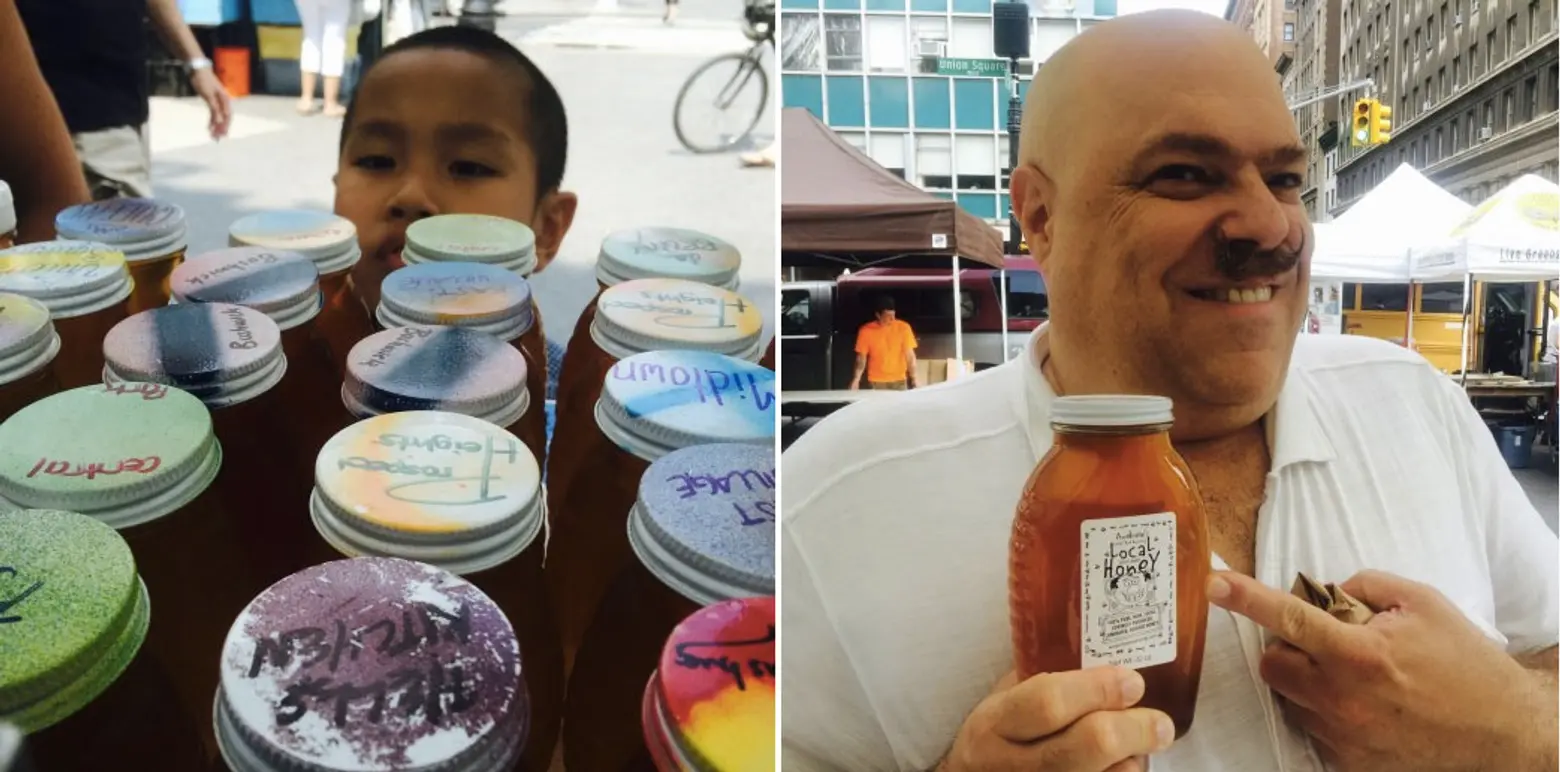
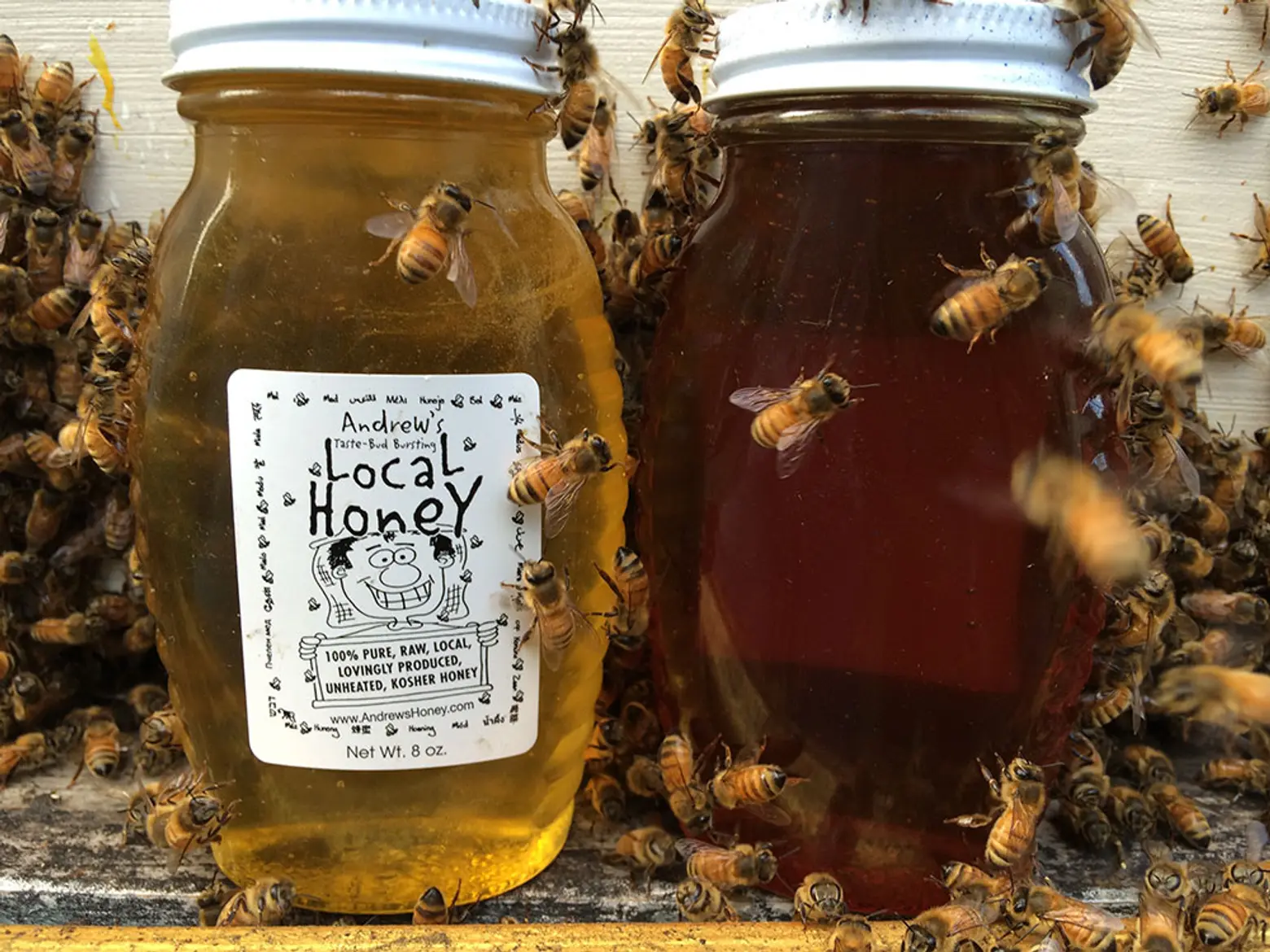
What’s the sweetest part of your job?
Well, I think the sweetest part of my job is when I harvest honey because there’s nothing that compares to the smell and the taste of warm honeycomb just out of the beehive. There’s absolutely nothing as good as that. And the smell of a beehive with the bees themselves and the wax and honey—I hope this is how heaven smells.
+++
Andrew’s Honey can be found Wednesdays and Saturdays at Union Square Greenmarket.
RELATED:
- New Yorker Spotlight: ‘Wildman’ Steve Brill Takes Adventurous Folks Foraging in the City’s Parks
- Spotlight: Ron Ben-Israel on the Art and Architecture of Creating a Wedding Cake
- Spotlight: Rita McMahon Brings Avian New Yorkers Back to Health at the Wild Bird Fund
